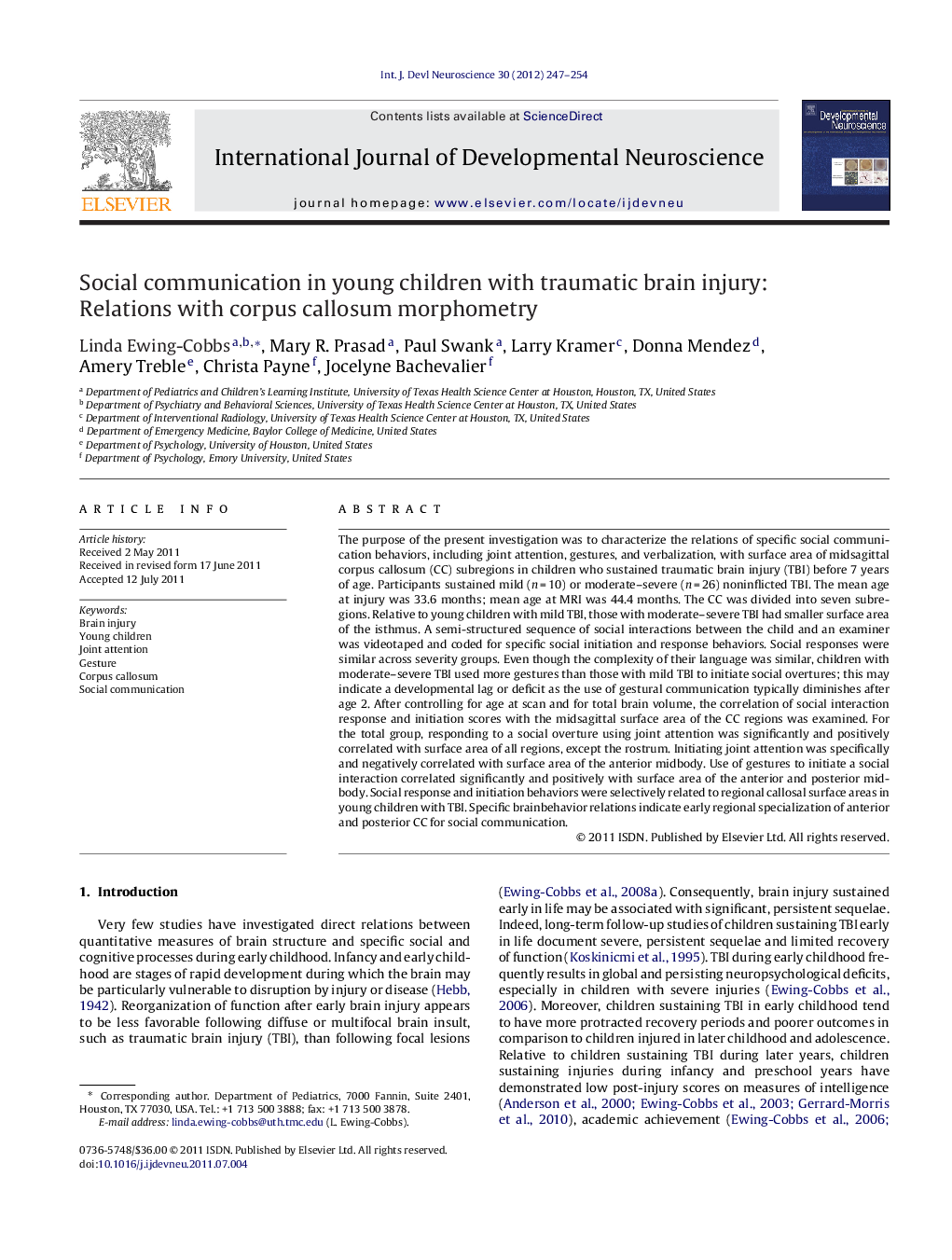| Article ID | Journal | Published Year | Pages | File Type |
|---|---|---|---|---|
| 2786237 | International Journal of Developmental Neuroscience | 2012 | 8 Pages |
The purpose of the present investigation was to characterize the relations of specific social communication behaviors, including joint attention, gestures, and verbalization, with surface area of midsagittal corpus callosum (CC) subregions in children who sustained traumatic brain injury (TBI) before 7 years of age. Participants sustained mild (n = 10) or moderate–severe (n = 26) noninflicted TBI. The mean age at injury was 33.6 months; mean age at MRI was 44.4 months. The CC was divided into seven subregions. Relative to young children with mild TBI, those with moderate–severe TBI had smaller surface area of the isthmus. A semi-structured sequence of social interactions between the child and an examiner was videotaped and coded for specific social initiation and response behaviors. Social responses were similar across severity groups. Even though the complexity of their language was similar, children with moderate–severe TBI used more gestures than those with mild TBI to initiate social overtures; this may indicate a developmental lag or deficit as the use of gestural communication typically diminishes after age 2. After controlling for age at scan and for total brain volume, the correlation of social interaction response and initiation scores with the midsagittal surface area of the CC regions was examined. For the total group, responding to a social overture using joint attention was significantly and positively correlated with surface area of all regions, except the rostrum. Initiating joint attention was specifically and negatively correlated with surface area of the anterior midbody. Use of gestures to initiate a social interaction correlated significantly and positively with surface area of the anterior and posterior midbody. Social response and initiation behaviors were selectively related to regional callosal surface areas in young children with TBI. Specific brainbehavior relations indicate early regional specialization of anterior and posterior CC for social communication.
► Young children with mild (n = 10) or moderate severe (n = 26) TBI. ► Examined joint attention, gestures, verbalization in social interaction. ► Correlate responding to/initiating social behavior with callosal surface area. ► Responding to request using joint attention related to most callosal regions. ► Initiating joint attention and gestures related to anterior midbody.
